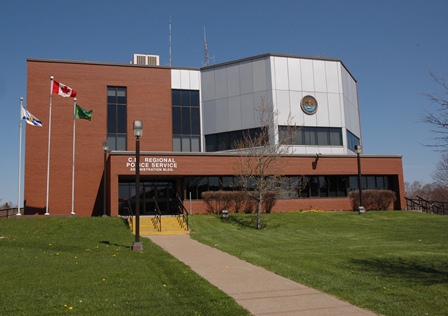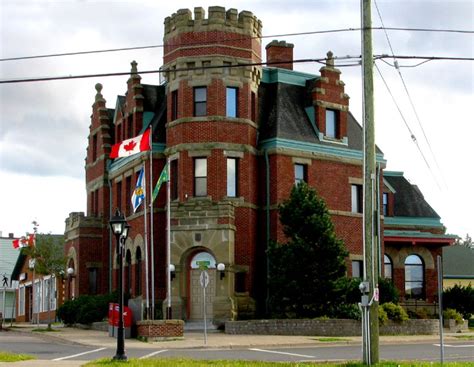Peter McIsaac, chief of the Cape Breton Regional Police Service (CBRPS), revealed this week that he is leaving his post after a diagnosis of post-traumatic stress disorder (PTSD).
McIsaac , who has been on medical leave since July 2019, told the CBC’s Tom Ayers that he’s come to understand he’s suffered from PTSD for 25 years — meaning for most of his 35-year policing career and the entirety of his 10-year tenure as chief.
On a personal level, this must have been a terrible condition to have lived with all these years and a painful diagnosis to hear. And indeed, McIsaac spoke to Ayers about how PTSD affects the sufferer, physically and mentally, and the toll it takes on their families and friends.

Peter McIsaac (CBC Photo by Tom Ayers)
I wish McIsaac a full recovery and a happy retirement, but my interest in the chief of police is not personal. My interest is in the implications of this diagnosis for the CBRPS. The questions that occur to me include, how can an officer spend 25 years suffering symptoms of PTSD without anyone on the force noticing? What toll does undiagnosed and untreated PTSD take on the sufferer’s coworkers or — particularly in the case of a chief — subordinates? And how can the CBRPS ensure the person it puts in the police chief’s chair will not eventually say, as McIsaac did this week, that it was “the worst place that [he] could be?”
Crime rates
Ayers’ encounter with McIsaac served as something of an exit interview, a chance for the outgoing chief to reflect on his career in that time-honored tradition of departing municipal officials — in addition to the web article, the “wide-ranging” interview was aired in four parts on CBC Information Morning Cape Breton and CBC Mainstreet Cape Breton — and I am mostly going to let it be (McIsaac is very proud of all CBRM’s new and renovated police stations, did not mention the John Be Gone sting) but there are a few subjects I feel compelled to address.
Ayers noted that Grant Thornton’s CBRM Viability Study, submitted to the municipality not long after McIsaac departed on sick leave, recommended an efficiency study of the Cape Breton Regional Police Service which, with about 200 officers, has a higher “cop-to-pop” ratio than any similar-sized Canadian jurisdiction (not to mention many larger-sized Canadian jurisdictions.)

CBRPS Central Division
That “efficiency” study, initially due in November, is now expected sometime in March (were this a work of fiction, that would read like a very ham-fisted attempt at foreshadowing). CBRM CAO Marie Walsh (who is related by marriage to Robert Walsh, the acting police chief overseeing the study) got out in front of any suggestion the review would result in a reduction in the size of the force, arguing the CBRM’s large force is why it has a low crime rate, an assessment with which McIsaac agrees.
In reality, researchers have struggled for years to understand why crime has been declining — not just in the CBRM but literally everywhere in the Western world — for the past quarter century. Theories range from ageing populations to declining alcohol consumption to getting the lead out of gasoline but no one has been able to answer the question definitively (I mean, outside of our municipal officials.)
One very interesting essay I read recently, by Michael Tonry (McKnight Presidential Professor in Criminal Law and Policy at the University of Minnesota Law School), suggests the question we should be asking ourselves is not why crime has been declining since the ’90s but why crime spiked between the ’60s and ’90s. Tonry presents a very convincing case that this increase was an anomaly, interrupting what had otherwise been a centuries-long downward trend in crime — a trend that has since resumed. He explores a number of possible theories, but concludes only that, “As was true in Europe beginning in the late Middle Ages, crime rates move to deep and broad social forces, and move in parallel, even if sometimes with lags.”

CBRPS East Division (New HQ Glace Bay)
Tonry (whose paper was published in 2014) shows that crime trends “move in parallel” even when responses to them do not, a concept he illustrates by comparing Canada and the United States:
Canadian crime rate patterns have closely paralleled America’s since 1960, but Canada’s imprisonment patterns and criminal justice policies have been starkly different (Webster and Doob 2007). Since 1960, the Canadian imprisonment rate has fluctuated around 100 per 100,000 population, while America’s rose from 150 per100,000 in 1970 to 756 in 2007. Canadian agencies have not emphasized zero-tolerance and other aggressive forms of policing, and the Canadian Parliament did not enact three-strikes, truth-in-sentencing, and life-without-possibility-of-parole laws. Only in the last couple of years have significant mandatory minimum sentence laws been enacted; they do not, however, require sentences measured in decades and life-times and are meeting strong resistance from the appellate courts (R.v. Smickle, 2013 Ontario Court of Appeals 677 [CanLII];R. v. Nur,2013 Ontario Court of Appeals 678 [CanLII]; Doob and Webster2013).
Yet crime rates moved in tandem.

But this is nuanced, thoughtful, research-based thinking, which our local officials apparently don’t have time for, so they get all post hoc, ergo propter hoc about it: The CBRM has a large police force. The CBRM has a low crime rate. Ergo, the CBRM’s low crime rate must be due to its large police force.
MIA
“CBRM officials” have another argument in favor of a large force: “the police service needs that many officers to cover the large regional municipality, to backfill up to 40 officers who are off sick at any given time.” As McIsaac tells Ayers:
“Go and ask the union membership right now, do they think they have enough members, because they are working shorthanded just about every day. People are getting burned out. It’s probably some of the reasons why some of them are not working.
“And the only reason our number is what it is, is because 30-plus are there because of outside resources or money allocated from somewhere else.”

CBRPS North Division HQ, Sydney Mines (renovated Post Office)
So, two things.
First, isn’t arguing you need an over-sized police force to deal with your high rates of absenteeism like saying you need 100 buckets to deal with all the leaks in your roof? Shouldn’t the force be coming to grips with why 40 officers may be out on any given day rather than simply making sure they have enough staff to cover for them?
Perhaps the police review will deal with this.
Second, that argument about outside funding has also been trotted out — most recently by Acting Chief Walsh in September 2019 — to prove that CBRM doesn’t really have a high cop-to-pop ratio because it only “fully” funds 167 officers:
The others are funded at least in part by outside agencies, such as the provincial departments of education and justice and the Membertou First Nation.
That makes the ratio about 180 per 100,000.
“I don’t think that we are overpoliced,” the acting chief said.
I have to sub-divide this into two further things.
First, whether the CBRM fully pays for them or not, there are 200 officers policing our municipality.
And second, the amount at least one of these “outside agencies” (the Department of Justice) is paying to fund these extra cops has been controversial since at least 2013, when a Task Force formed by then-Mayor Cecil Clarke to “make recommendations regarding the organization and operations of the Cape Breton Regional Municipality” reported that:
Programs such as “Boots on the Street” which are externally funded have substantially augmented policing services in the CBRM. However, the officers sourced through this program have been integrated into the regular policing regimen. Because the province has frozen support for the program at 2008 levels, the operating budget of the CBRM has to support more than $300,000 in costs for these officers (salaries and associated benefit costs). The cost would not have been budgeted for which means additional areas had to be cut to support these previously externally funded positions. The CBRM does not have the financial resources to continue to pay for these ”Boots on the Streets” officers if external monies are not adjusted to current levels.
But the CBRM has continued to find the financial resources to pay for these officers, even as the gap between what the province sends us and what they cost us has continued to widen.
But again, maybe the police review will address these concerns.
Social work
McIsaac surprised me by not only grasping entirely what “defund the police” means but by supporting it.
He noted that police are called in to do many things that would once not have been considered their jobs, from entering schools to deal with students to handling individuals on probation.
I give McIsaac full credit here because this is familiar territory for him. He told the CBRM Police Commission in February 2019:
You heard me say this before but the police have gone from the agency of last resort to the social agency of first choice, expected to be responders to just about anything and everything that happens in our communities.
In speaking with Ayers, he said:
You want to defund the police? Good. Take the money away from the police, give it to the people that are supposed to be doing it. Let us go and do some other things.
That, in my opinion, is an excellent note for a chief to go out on.







